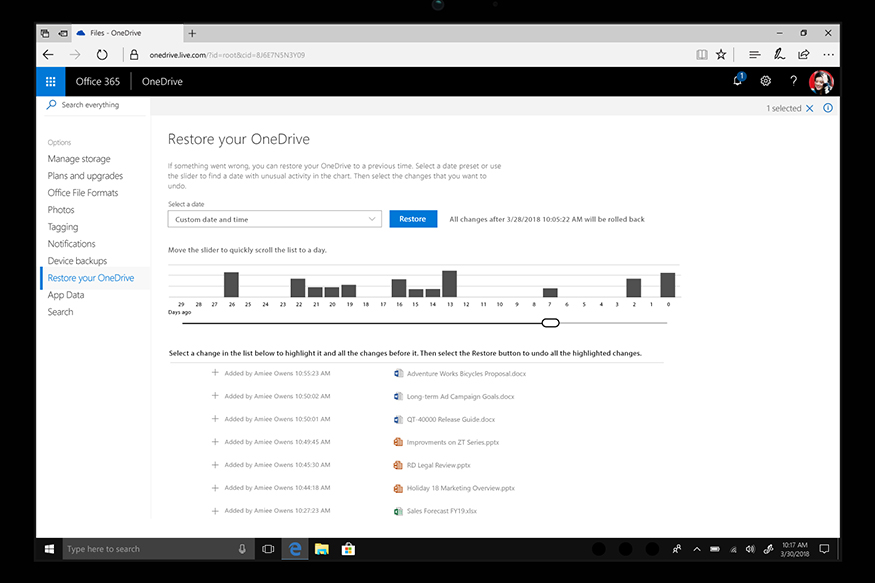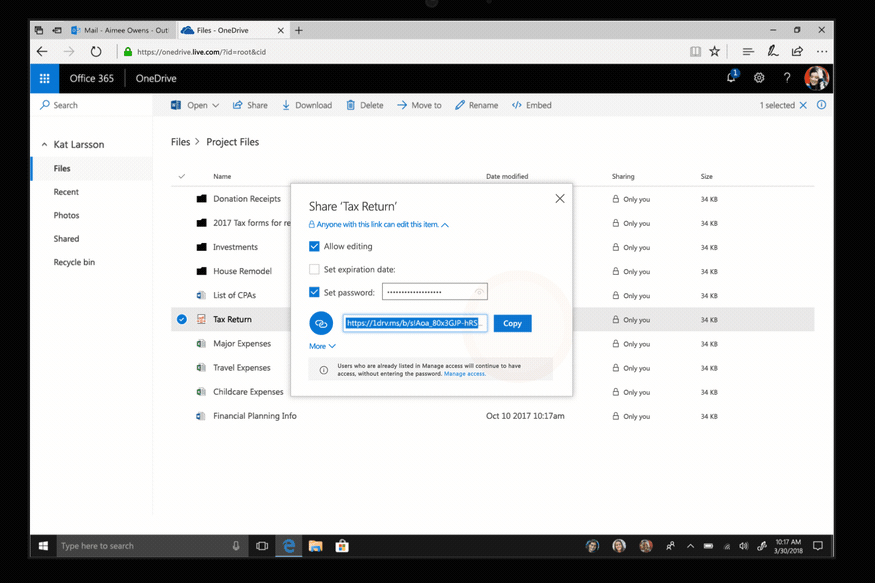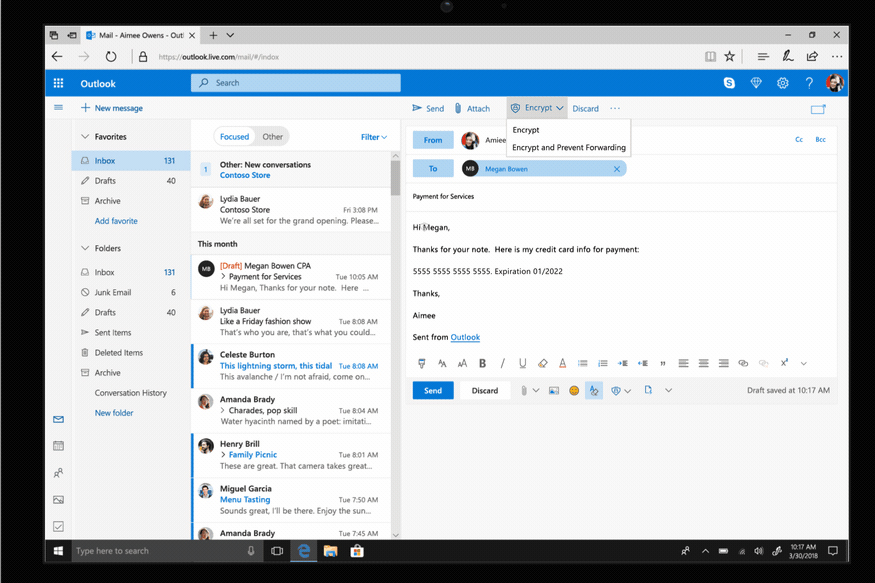• File recovery from malicious attacks like ransomware.
• Tools to help keep user information secure and private.
• Advanced protection from viruses and cybercrime.
Here is how the new security measures by Microsoft work:
Recover files from a ransomware attack
Remember the WannaCry Ransomware attack that took place last year? Ransomware attacks like that tend to “lock up” the system of a user with an intention of extorting money from the victim. Microsoft has now introduced two new security measures that will allow the users to recover their files in case a Ransomware attack takes place. The two security measures include ‘Files Restore’ and ‘Ransomware detection & recovery’.
1. Files Restore- Microsoft now allows users to use the ‘Files Restore’ feature from their OneDrive for Business to their personal OneDrive account. Through Files Restore, users can restore their entire OneDrive content to an earlier point in time within the last 30 days. Through this, users can recover their important files in the event of a ransomware attack, accidental mass deletion, file corruption or like.
2. Ransomware detection and recovery- In case a ransomware attack is detected on a user’s system, Microsoft will now alert them through emails, mobile and desktop notifications and further guide them through a recovery process involving restoration of files from their OneDrive account from a point in time before the attack was detected. Furthermore, Microsoft announced that it will be constantly evolving its attack detection capabilities to be ON the top of a ransomware attack.
 Microsoft ‘Restore your OneDrive’. (Image: Microsoft)
Microsoft ‘Restore your OneDrive’. (Image: Microsoft)
Tools to help keep user information secure and private
Microsoft has announced three new tools as additions to its Office 365 to protect the user’s information from going into the wrong hands. These tools are:
1. Password protected sharing links- In order to prevent an unauthorised access to information sent across by a user through an email, Microsoft has added password protection for such shared information. Through this, users will be able to ‘set and require a password’ for anyone to gain access to a shared file or a folder, thus restricting the access to the information only to those having a password.
 Microsoft ‘Password Protected Sharing’. (Image: Microsoft)
Microsoft ‘Password Protected Sharing’. (Image: Microsoft)
Also read: Facebook Suspends Canadian Firm AggregateIQ Over Data Scandal
2. Email encryption- Microsoft offers email encryption on Outlook.com as an added layer of protection to the email exchange. Through these encrypted emails, the receiver will receive an encrypted email, in the form of a link to an Office 365 webpage where either an OTP or an option of re-authenticating with a trusted provider can be chosen before the email can be viewed. Outlook users will also be prompted to use the email encryption while composing a mail containing sensitive information.
3. Prevent forwarding- A new ‘prevent forwarding’ option for Microsoft users will now restrict the forwarding or the copying of emails by the recipient. Microsoft also says that the documents attached to such emails will also be encrypted and any further recipient of the same will not be able to open them as they are encrypted even after downloading.
 Microsoft ‘Prevent Forwarding’. (Image: Microsoft)
Microsoft ‘Prevent Forwarding’. (Image: Microsoft)
Advanced protection from viruses and cybercrime
Earlier in October, Microsoft had announced advanced link checking and attachment scanning in Outlook.com. Through this, its subscribers could check emails and links for any malicious attachments. The company is now planning to extend the same protection to its Word, Excel and PowerPoint softwares and will now also enable it to work in real-time.
Advanced link checking in Word, Excel, and PowerPoint- Starting later this year, Microsoft Office 365 users will be able to check the links that they click in Word, Excel or PowerPoint in real-time to find out if the link is a malicious one or if its a phishing scam. The precautionary measure will redirect the users to a warning site if such a potential harm is detected in the link.
 Microsoft ‘Advanced Link Checking’. (Image: Microsoft)
Microsoft ‘Advanced Link Checking’. (Image: Microsoft)
Availability
As per Microsoft, ‘Ransomware detection & recovery’ and ‘Files Restore’ have started rolling out from April 5 and will be available to all Office 365 subscribers soon. ‘Password protected sharing links’, ’email encryption’, and ‘prevent forwarding’ will start rolling out in the coming weeks. ‘Advanced link checking in Word, Excel, and PowerPoint’ will be coming to the users in the second half of 2018. ‘Advanced link checking’ and ‘advanced attachment scanning’ is already available in Outlook.com.
Watch: Interview | Microsoft India President Anant Maheshwari
Also Watch
-
 Golden Start For India: Mirabai Chanu’s Reaction After Winning First Gold
Golden Start For India: Mirabai Chanu’s Reaction After Winning First Gold
-
 Friday 06 April , 2018
Friday 06 April , 2018
Blackmail Review: Is This Black Comedy Worth The Hype?
-
 Friday 06 April , 2018
Friday 06 April , 2018
Top Five Cars at New York Auto Show 2018
-
 Wednesday 04 April , 2018
Wednesday 04 April , 2018
YouTube Attack : Four Injured In Shooting At Company Headquarters
-
 Wednesday 04 April , 2018
Wednesday 04 April , 2018
Why CBSE Decided Against Class X Re-Examination


Blackmail Review: Is This Black Comedy Worth The Hype?

Top Five Cars at New York Auto Show 2018

YouTube Attack : Four Injured In Shooting At Company Headquarters

Why CBSE Decided Against Class X Re-Examination






